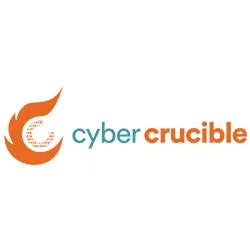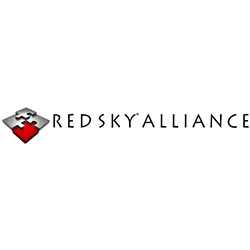In the never-ending cybersecurity saga, reactive measures are the default setting for far too many. Waiting for a breach to occur before addressing vulnerabilities is... a bold strategy, let's call it. It's like scheduling a health check after a catastrophic organ failure. The consequences are messy and expensive—the global average cost of cleaning up such a mess is now $4.88 million, according to a recent IBM report.

This is why Vulnerability Management is the cornerstone of a security strategy for people who prefer sleeping at night. As defined by the folks at the National Institute of Standards and Technology (NIST), it’s the continuous—and yes, we mean continuous—process of identifying, assessing, treating, and reporting on security weaknesses.
Think of it as a digital health check for your entire IT infrastructure, just without the terrible waiting room music. It’s about ensuring every component is functioning optimally and any potential illnesses are found and treated before they make the evening news.
The Pervasive Nature of Vulnerabilities: They're Everywhere. Have Fun.

Vulnerabilities are an inherent, almost charming, feature of the complex software and hardware that run our world. They pop up from coding errors, design flaws, inspired misconfigurations, or that one server running software from 2008.
New vulnerabilities are discovered constantly, a gift that never stops giving. The Cybersecurity and Infrastructure Security Agency (CISA) works tirelessly to catalog these flaws, giving you an endless to-do list. Ignoring these weaknesses is like ignoring a crack in a dam. It might be fine for a while, but eventually, you're going to have a very bad day.
Consider the sheer volume of software your organization uses. Now double it, because you forgot about the shadow IT department. Each piece is a potential gateway. Manually keeping track of them all is a fantastic way to drive yourself slowly insane.
What Is Vulnerability Management? Your Proactive (and Sanity-Saving) Shield

Vulnerability Management provides a structured, automated approach to this chaos. It’s a cyclical process that helps organizations stop guessing and start knowing where their risks are. A robust program gives you the visibility and control to strengthen your security posture proactively, rather than reactively chugging coffee at 3 AM after an exploit.
It's like having a team of expert doctors who constantly scan your digital body, point out the weak spots, and then tell you exactly how to fix them—all without a single condescending "I told you so."
What Are the Core Stages of an Effective Vulnerability Management Program?
.jpeg?access_token=cdf48fb7-2d61-4769-a888-a88621ea688e)
A mature program isn't a one-time project you can check off a list. It’s a lifecycle, a beautiful, repeating circle of vigilance.
- Asset Discovery: The first rule of Vulnerability Management Club is: you can't protect the server your marketing intern spun up last year and forgot about. You have to know it exists. A comprehensive inventory is step one. [Link to your Asset Inventory or Management Service Page, if available].
- Vulnerability Scanning: Time to poke the bear. This is the automated process of checking your assets against giant databases of known "uh-ohs," like the official Common Vulnerabilities and Exposures (CVE) list. This is where you find out just how many unlocked windows you have.
- Vulnerability Analysis and Prioritization: And now for everyone's favorite part: the vulnerability scan report. A document often long enough to be its own trilogy, filled with thousands of "critical" issues. The trick is to find the actually critical vulnerabilities. This stage is about separating the "the building is on fire" risks from the "the toaster is unplugged" risks.
- Remediation: The action stage. Or, as it's often called, the "trying to get three different departments to coordinate on a patch" stage. This is where you fix things by patching, reconfiguring, or, in some cases, documenting a very good reason why you're accepting the risk (and hoping for the best).
- Verification: Did you actually fix it? The verification scan is the ultimate fact-checker, ensuring the vulnerability is gone and your fix didn't accidentally break ten other things.
- Reporting and Monitoring: This is where you generate the pretty charts that prove you're doing a good job. It’s essential for demonstrating compliance and justifying your budget for the next go-around of the lifecycle.
Leveraging Advanced Platforms for (Slightly) Less Painful Vulnerability Management

Modern cybersecurity platforms can automate and streamline much of this, turning an impossible task into a merely difficult one. A good platform can:
- Provide a single screen to see all your problems, rather than fifteen different spreadsheets.
- Automate discovery and scanning so you don't have to.
- Use actual intelligence to prioritize what to fix first, so you're not just staring at a sea of red alerts.
- Offer clear guidance on how to fix things.
- Track the remediation process to create accountability.
- Integrate with the other tools you're already using.
- Generate those aforementioned pretty charts for management.
These platforms transform vulnerability management from a soul-crushing chore into a strategic advantage that actually reduces your attack surface.
Building a Proactive Cybersecurity Posture (Because the Alternative is Awful)
.jpeg?access_token=c1bc9684-31ff-4670-93bf-94a8c3eb2c4a)
A mature vulnerability management program isn't just about fixing flaws; it's about building a proactive culture that robs attackers of easy wins. By continuously closing security gaps, you make your organization a much less appealing, more difficult target. It’s about taking control of your digital health before someone else does.
This proactive approach lets your security team stop playing whack-a-mole and start strategically strengthening your defenses.
Frequently Asked Questions (FAQ)
1. What is the difference between a vulnerability assessment and penetration testing?
A vulnerability assessment gives you a list of unlocked doors and windows. A penetration test is when you hire someone to actually try and break in through them to see how far they get and what they can steal. One is a map of weaknesses; the other is a simulated attack.
2. How often should you perform vulnerability scans?
How often do you want to know what's broken? For critical systems, scan constantly. For everything else, the answer is "more often than you're probably doing it now." Weekly or monthly is a decent start, but your risk appetite and compliance needs will dictate the real answer.
3. Is vulnerability management the same as patch management?
Saying they're the same is like saying a chef is the same as an oven. Patch management is a critical tool (the oven) used in the remediation stage of the overall vulnerability management process (the art of cooking a full meal without burning the kitchen down).
Ready to Stop Reacting and Start Defending?

Don't wait for a vulnerability to become a headline. It's time to get proactive. [Contact Travis ASM today] to see how a modern vulnerability management program can give you the visibility and control you need to secure your digital future—and maybe even get some sleep.











